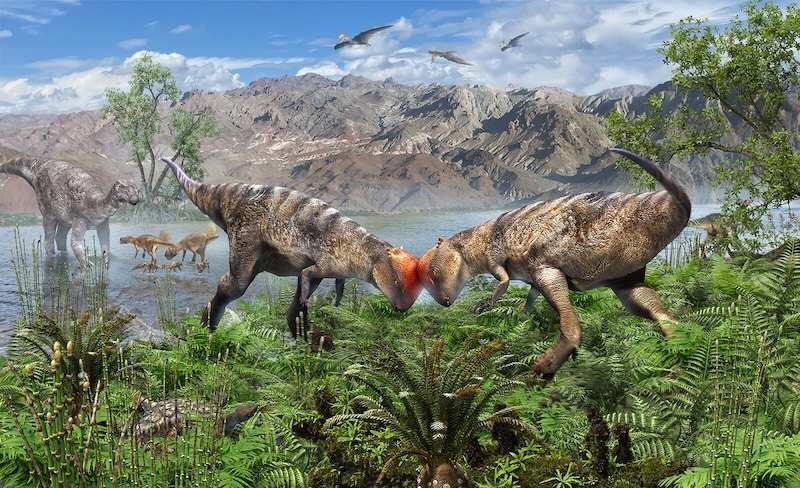
- Scientists discovered a new pachycephalosaur, Zavacephale rinpoche, in Mongolia’s Gobi Desert, dating back to 108 million years ago.
- This is the oldest pachycephalosaur fossil ever found. It includes a well-preserved skull, limb and tail bones, as well as the first discovery of hand bones and stomach stones.
- Despite being a juvenile, Z. rinpoche already had a fully developed skull dome, offering new insights into dome development in early pachycephalosaurs.
A new pachycephalosaur fossil from the Gobi Desert
Pachycephalosaurs are dinosaurs known for the prominent helmet-like bony dome at the top of their heads. They likely used it in headbutting displays, much like modern-day bighorn sheep. On September 17, 2025, scientists said they’ve discovered a new species of pachycephalosaur from the Gobi Desert in Mongolia, dating to about 108 million years ago. They named it Zavacephale rinpoche. The discovery is significant because it is the oldest and most complete pachycephalosaur fossil paleontologists have yet found. Plus, this specimen was a juvenile that had already developed its iconic dome at the top of its skull.
Lindsay Zanno, at the North Carolina Museum of Natural Sciences, is one of the paper’s co-authors. She said:
This specimen is a once-in-a-lifetime discovery. It is remarkable for being the oldest definitive pachycephalosaur, pushing back the fossil record of this group by at least 15 million years, but also because of how complete and well-preserved it is. Z. rinpoche gives us an unprecedented glimpse into the anatomy and biology of pachycephalosaurs, including what their hands looked like and that they used stomach stones to grind food.
The researchers published their findings in the peer-reviewed journal Nature on September 17, 2025.
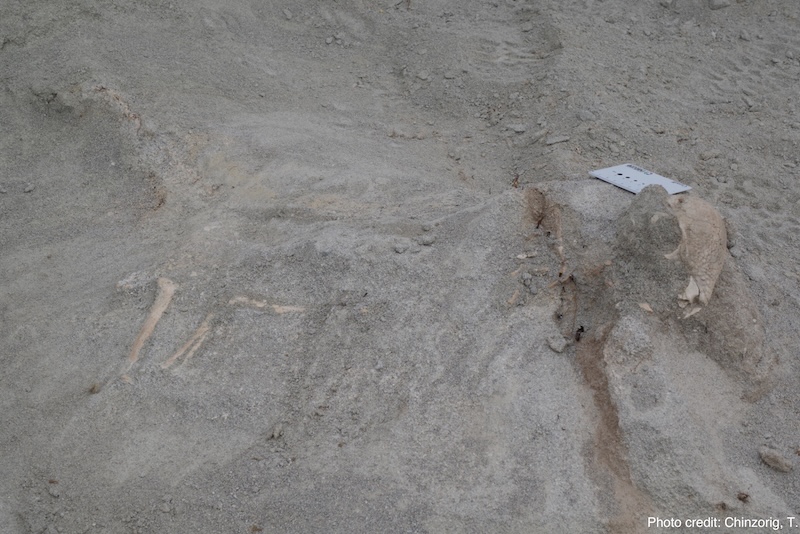
Headbutting dinosaurs
Pachycephalosaurs lived during the Cretaceous Period (143 to 66 million years ago). These domed-headed dinos have a sparse fossil record. Most of the bones researchers have found – in North America and Asia – have been in fragments.
These bipedal dinosaurs were mostly herbivores. As adults, they could measure about 14 feet (4.3 meters) in length and 7 feet (2.1 meters) in height. And they could weigh between 800 and 900 pounds (360 to 400 kg).
Pachycephalosaurs are notable for their unusually domed skulls, as if they were wearing a helmet. Also, some of these dinosaurs had additional head ornamentation, such as spikes. This has led scientists to think these dinosaurs engaged in headbutting displays.
Zanno commented:
The consensus is that these dinosaurs used the dome for socio-sexual behaviors. The domes wouldn’t have helped against predators or for temperature regulation, so they were most likely for showing off and competing for mates.
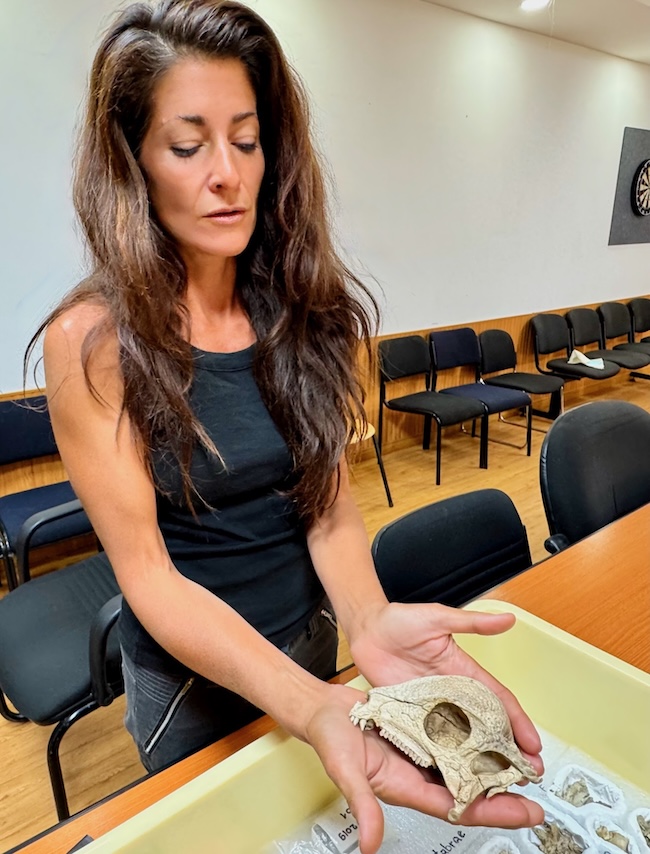
Zavacephale rinpoche is a new pachycephalosaur species
The researchers named the new dinosaur species Zavacephale rinpoche. Zava, they said, means root or origin in Tibetan while cephal is head in Latin. The species name rinpoche translates to precious one in Tibetan.
This new find is remarkable because the scientists recovered about half of the animal’s skeleton, the most ever found for a pachycephalosaur. They excavated a well-preserved skull, along with some limb and tail bones. And, for the first time, they discovered pachycephalosaur hand bones. They also found gastroliths, or stomach stones, the first ever associated with pachycephalosaurs. These were stones the dinosaur swallowed to help grind food in its digestive system.
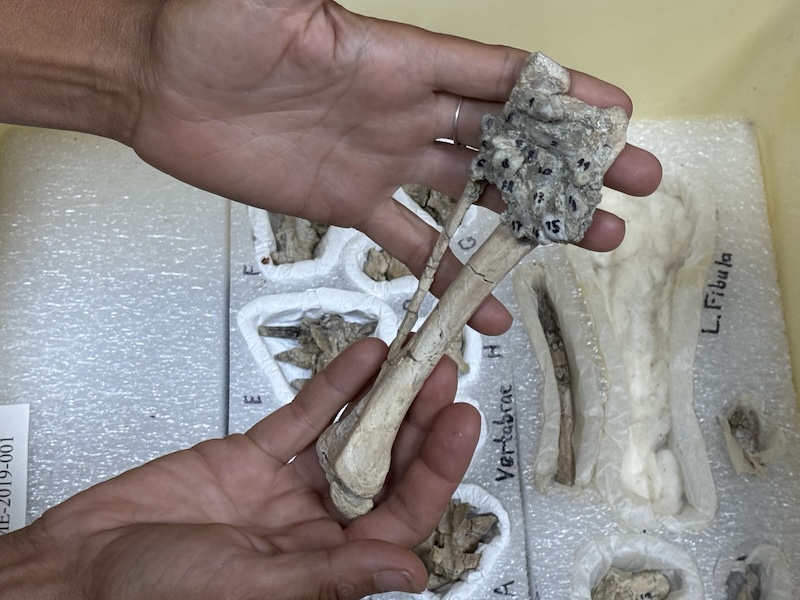
Chinzorig Tsogtbaatar, a post-doctoral scholar at the North Carolina Museum of Natural Sciences, discovered this fossil in 2019 during an expedition to the Gobi Desert. He is also the paper’s lead author. Tsogtbaatar said:
The newly recovered materials of Z. rinpoche, such as the hand elements, the stomach stones (gastroliths), and an articulated tail with covered tendons, reshape our understanding of the paleobiology, locomotion, and body plan of these ‘mysterious’ dinosaurs.
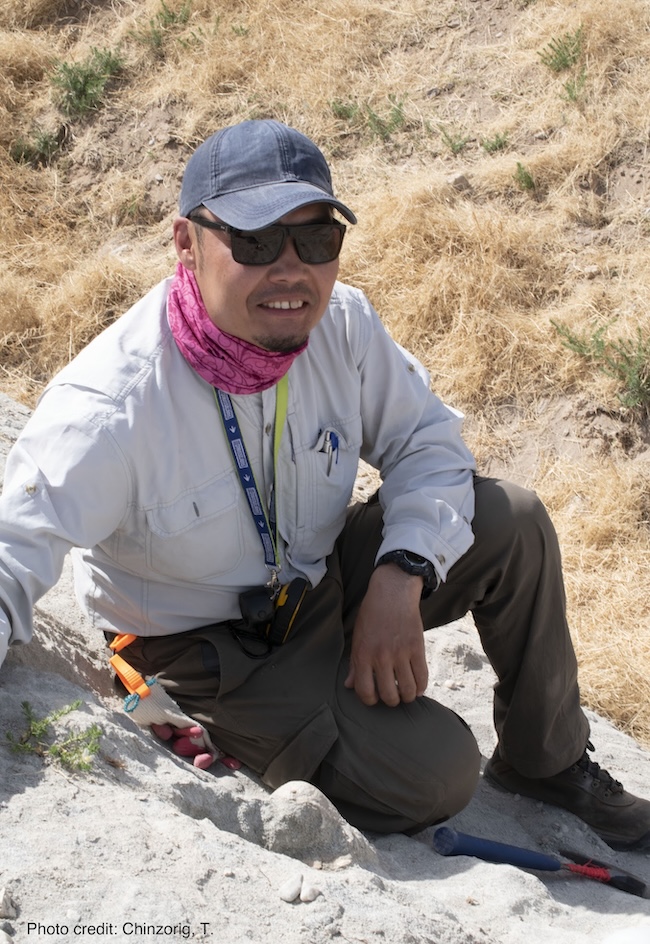
New insights into the evolution of early pachycephalosaurs
In addition, Z. rinpoche is the earliest known pachycephalosaur. As a result, it fills a crucial gap in the evolutionary timeline of this type of dinosaur.
It lived about 108 million years ago, during the Early Cretaceous. The specimen was in the arid Khuren Dukh locality of the Eastern Gobi Basin in Mongolia. But during the Early Cretaceous, that area was a valley with several lakes, surrounded by cliffs.
Tsogtbaatar commented:
Z. rinpoche predates all known pachycephalosaur fossils to date by about 15 million years. It was a small animal – about three feet or less than one meter long – and the most skeletally complete specimen yet found.
This new specimen was a juvenile
The specimen is also fascinating because it was still a juvenile when it died. Scientists were able to determine this from examining a lower leg bone.
Zanno said:
We age dinosaurs by looking at growth rings in bones, but most pachycephalosaur skeletons are just isolated, fragmentary skulls. Z. rinpoche is a spectacular find because it has limbs and a complete skull, allowing us to couple growth stage and dome development for the first time.
Despite being a juvenile, this specimen had already formed an impressive skull dome. But there was no sign of additional head ornamentation that researchers have seen in other pachycephalosaur species. For this juvenile Z. rinpoche, we don’t know if head ornamentation like spikes might have developed as the animal matured further. Or perhaps this early pachycephalosaur species did not have ornamentation.
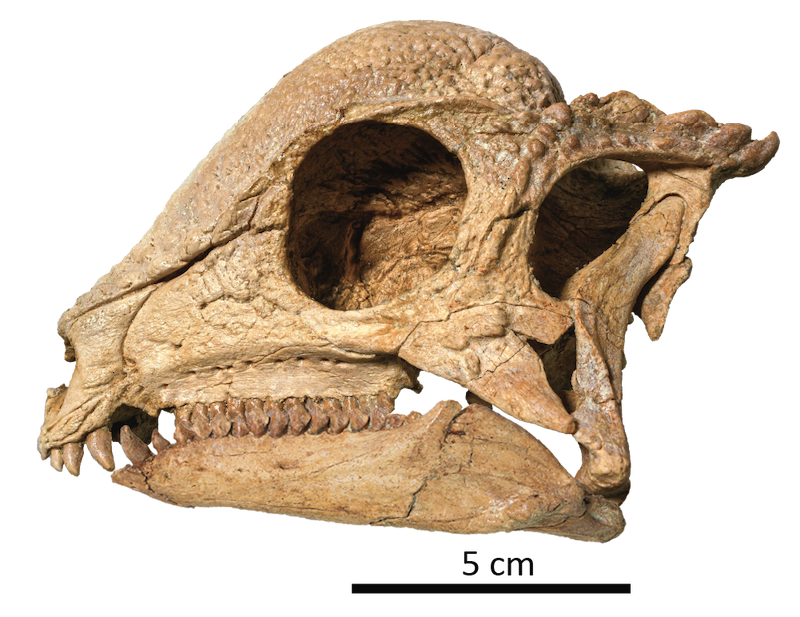
Tsogtbaatar said:
Z. rinpoche is an important specimen for understanding the cranial dome development of pachycephalosaurs, which has been debated for a long time due to the absence of early diverging or pre-Late Cretaceous species and the fragmentary nature of nearly all pachycephalosaurian fossils.
Bottom line: The new dinosaur Zavacephale rinpoche, the oldest pachycephalosaur fossil ever found, was a juvenile that had already developed its bony head dome.
Source: A domed pachycephalosaur from the early Cretaceous of Mongolia
Read more: Khankhuuluu is a new T. rex dinosaur relative from Mongolia











